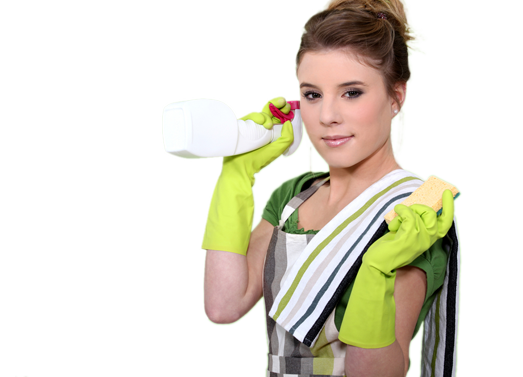Air Quality: The Underestimated Aspect of Indoor Spaces
Posted on 12/06/2025
Air Quality: The Underestimated Aspect of Indoor Spaces
In today's fast-paced world, we often focus on visible facets of our indoor environments -- design, comfort, or technology integration. But there is an invisible element that profoundly impacts our health and well-being: indoor air quality. Despite its crucial role, air quality within indoor spaces is frequently overlooked, yet it can significantly affect productivity, comfort, and long-term health outcomes.

Understanding Indoor Air Quality
Indoor air quality (IAQ) refers to the condition and composition of the air within and around buildings and structures, especially as it relates to the health and comfort of building occupants. While outdoor air quality is widely discussed and regulated, indoor air often lacks the same level of scrutiny even though people spend over 90% of their time indoors.
- Homes
- Offices
- Schools
- Commercial spaces
Each of these spaces can harbor pollutants and triggers that go largely unnoticed - unless they result in immediate and severe symptoms.
Why is Indoor Air Quality Important?
The consequences of poor air quality inside buildings are far-reaching. Health effects can range from minor irritations, such as eye and throat discomfort, to serious respiratory illnesses and chronic conditions. Furthermore, poor IAQ can affect the cognitive function and productivity of occupants, thereby carrying both human and economic costs.
- Short-term symptoms: Headaches, fatigue, dizziness, nausea, itchy eyes/nose.
- Long-term health issues: Asthma, allergies, respiratory diseases, heart disease, and even certain cancers.
- Decreased performance: Lack of focus, reduced productivity, increased absenteeism.
Sources of Indoor Air Pollution
Many people believe that staying indoors keeps them safe from pollution. In reality, indoor spaces can harbor a cocktail of pollutants - often at higher concentrations than outdoor air. Understanding the sources of poor indoor air quality is the first step toward improvement.
Common Indoor Air Pollutants
- Volatile Organic Compounds (VOCs): Emitted from paints, cleaning agents, varnishes, adhesives, and synthetic materials.
- Particulate Matter (PM): Fine dust, pet dander, pollen, and particles from cooking and smoking.
- Carbon Monoxide (CO): Produced by malfunctioning gas appliances, heating systems, and vehicle exhaust in attached garages.
- Formaldehyde: Found in furniture, pressed wood, flooring, and insulation.
- Radon: A colorless, odorless, naturally occurring radioactive gas that can seep into homes from the ground.
- Mold and Mildew: Thrive in moist environments caused by leaks, poor drainage, or inadequate ventilation.
- Biological Contaminants: Bacteria, viruses, dust mites, and pet allergens are ubiquitous in many indoor settings.
The mixture and concentration of these indoor air pollutants largely depend on building construction, local climate, occupant activities, and cleaning habits.
Factors Influencing Air Quality in Indoor Spaces
It's vital to grasp what affects indoor air pollution levels. Several factors can either worsen or improve indoor air quality:
-
Ventilation:
Poor ventilation is the main culprit behind the build-up of indoor pollutants. Without adequate airflow, contaminants get trapped and multiply, especially in airtight buildings.
- Building Materials: Construction materials such as pressed wood, insulation, and synthetic carpets may emit formaldehyde or VOCs long after installation.
- Cleaning Practices: Many household cleaners and air fresheners release harmful chemicals into the air.
- Moisture: High humidity offers an ideal environment for mold, mildew, and dust mites.
- Occupant Activities: Cooking, smoking, burning candles, using personal care products, and having pets all add to the load of indoor pollutants.
The Surprising Cost of Bad Indoor Air
Underestimating indoor air quality comes at a price. According to the EPA, the health costs associated with poor indoor air quality in the US alone reach tens of billions of dollars annually. These costs arise from lost productivity, increased medical bills, and higher rates of absenteeism.
- Asthma: Poor air in homes and schools can trigger attacks and hospital visits.
- Allergies: Dust, pollen, and pet dander exacerbate symptoms year-round indoors.
- Cognitive Impact: Recent studies link better indoor air quality to improved decision-making, productivity, and well-being.
Who is Most at Risk?
Certain groups are more vulnerable to the effects of poor indoor air than others:
- Children and elderly
- Pregnant women
- People with asthma, allergies, or respiratory conditions
- Individuals with compromised immune systems
Protecting these at-risk groups requires proactive steps to improve and maintain the quality of indoor air.
Easy Ways to Improve Air Quality in Indoor Environments
The good news is that enhancing indoor air quality doesn't have to be expensive or complicated. Whether you're at home or at work, implementing the following solutions can make a big difference.
1. Increase Ventilation
- Open windows and doors regularly to let in fresh outdoor air, especially during mild weather.
- Install and maintain exhaust fans in kitchens and bathrooms.
- Use mechanical ventilation or energy recovery ventilators (ERVs) in newer, tightly-sealed buildings.
2. Control Sources of Indoor Air Pollution
- Use low-VOC or VOC-free paints, cleaning products, and furnishings.
- Store chemicals and paints outside of living areas, preferably in sealed containers.
- Avoid smoking indoors and reduce the use of candles or incense.
3. Maintain Optimal Humidity
- Keep indoor humidity between 30-50% to inhibit mold growth and dust mites.
- Use a dehumidifier or air conditioner in humid climates.
- Address water leaks or condensation promptly.
4. Clean Regularly & Thoroughly
- Vacuum frequently with a HEPA-filter vacuum cleaner to reduce dust and allergen buildup.
- Wash bedding and curtains regularly.
- Keep pets groomed and clean floors to minimize pet dander and hair.
5. Use Air Purifiers
- Invest in high-quality air purifiers with HEPA and activated carbon filters for key living areas.
- Consider portable units for bedrooms, nurseries, and offices.
6. Test for Radon and Carbon Monoxide
- Purchase and use radon test kits, especially in areas known for high radon prevalence.
- Install carbon monoxide detectors near bedrooms and gas appliances.
- Service heating and ventilation systems regularly to prevent dangerous leaks.
7. Bring in Plants -- With Care
- Certain indoor plants can help boost air quality by absorbing toxins and releasing oxygen.
- However, plants can also harbor mold in their soil. Choose wisely and don't overwater.
Technological Advances for Air Quality in Modern Indoor Spaces
With the rise of smart buildings and increasing awareness of health, technology now empowers us to monitor and improve indoor air conditions more effectively:
- Smart Air Quality Monitors: These devices provide real-time feedback about particulate matter, CO2 levels, humidity, VOCs, and more.
- IoT-connected HVAC Systems: Automated systems can adjust airflow and filtration based on occupancy and detected air pollutants.
- UV-C Air Sanitizers: Harnessing ultraviolet light, these systems kill bacteria and viruses as air circulates through HVAC ducts.
- AI-driven Building Management: Artificial intelligence is being deployed to analyze vast amounts of IAQ data, identifying patterns, and optimizing air handling and purification automatically.
Integrating these solutions can help ensure a consistently clean and healthy indoor atmosphere, especially in office complexes, schools, healthcare settings, and commercial establishments.
Regulations and Guidelines for Indoor Air Quality
While regulatory standards for air quality are well established for the outdoors, indoor guidelines are less universally enforced. However, several organizations offer valuable resources:
- World Health Organization (WHO)
- United States Environmental Protection Agency (EPA)
- Occupational Safety and Health Administration (OSHA)
- ASHRAE (American Society of Heating, Refrigerating and Air-Conditioning Engineers)
These bodies provide recommendations and best practices for maintaining safe workplaces, schools, and homes. Advocacy continues for stricter indoor air quality regulations, especially in response to COVID-19 and heightened awareness of airborne risks.
Myths and Misconceptions about Air Quality Indoors
- "Outside air is always worse than indoor air."
Truth: Indoor air can be two to five times -- and sometimes over 100 times -- more polluted than outdoor air, especially in poorly ventilated spaces. - "If you don't smell anything, the air must be clean."
Truth: Many pollutants, like carbon monoxide and radon, have no odor but pose significant health threats. - "New buildings have better air."
Truth: New construction materials can emit high levels of VOCs, resulting in "sick building syndrome."

Future Trends: Towards Healthier Indoor Air
As society becomes more aware of the importance of air quality inside buildings, we can expect several positive trends:
- Health-Centric Building Design: Architects and developers are prioritizing ventilation, low-emission materials, and green plants.
- Smart Home Integration: Air quality monitoring and management will become standard features in homes and offices.
- Greater Consumer Awareness: Public demand for transparency about indoor air pollutant levels, especially in schools, hospitals, and hotels, will drive improvements.
- Increased Research Funding: More studies into the links between IAQ and chronic diseases are likely, influencing future safety standards and technologies.
Conclusion: Making Air Quality a Priority in Indoor Spaces
The air we breathe indoors is just as vital as the air outside, possibly even more so given the time we spend inside our homes, offices, and public buildings. Ignoring indoor air quality can lead to health problems, reduced productivity, and increased costs over time. By recognizing the risks, understanding sources, and embracing solutions -- from simple habits to cutting-edge technology -- we can create healthier, safer, and more comfortable indoor spaces for everyone.
Make air quality a top consideration in every renovation, construction, or daily cleaning routine. Your health and well-being -- and that of your loved ones -- depend on it.
For more resources and tips on improving the quality of indoor air, be sure to consult local health authorities and leading environmental organizations.





